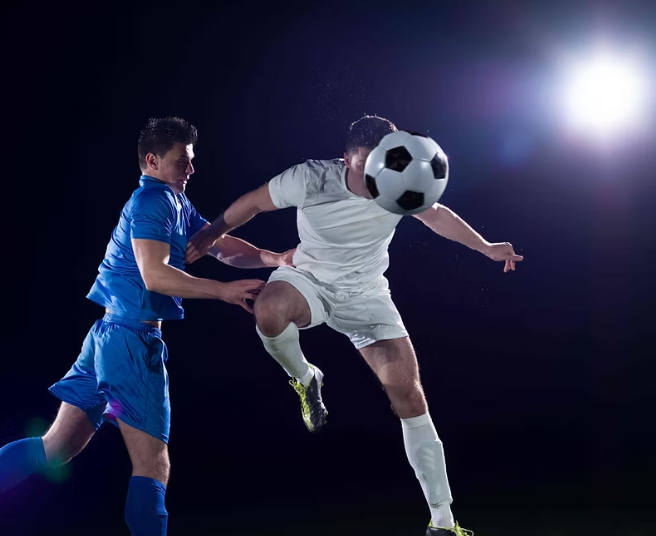The human brain is incredibly adaptable and capable of significant growth, yet many in youth soccer—coaches and trainers alike—fail to incorporate what we know about how the brain learns into their training methods. Even when they are aware of brain science, it often doesn’t influence their practices, leading to training sessions that unintentionally hinder player development.
This disconnect between neuroscience and soccer training can result in advice and methods that hold back progress instead of fostering it. In this post, we’ll explore how the brain learns, why this understanding is critical for soccer development, and practical strategies for aligning training with proven neuroscience principles. We’ll also address common misconceptions and share examples to help bridge the gap between science and practice.
The Science Behind How the Brain Learns
Neuroplasticity: The Brain’s Ability to Adapt
Neuroplasticity refers to the brain’s ability to form and strengthen neural connections in response to learning and experience. The more a player practices a skill, the stronger the neural pathways become, allowing them to perform the task automatically over time. This is particularly important in youth soccer, where kids’ brains are especially flexible, making early and consistent technical training extremely effective.
Myelination: Making Skills More Efficient
Myelin is a substance that coats nerve fibers, acting like insulation and speeding up neural signals. With consistent practice, myelination increases, improving the speed and reliability of a player’s skills. However, to benefit from myelination, practice must be focused and intentional. Mindless repetition won’t work—training needs clear goals and a deliberate focus.
Chunking: Breaking Down Skills
The brain processes complex tasks more effectively when they’re broken into smaller, manageable parts. This is where skill isolation comes into play. Drills that focus on individual skills, such as passing or dribbling, allow players to master each piece before combining them. Overloading players with too many skills at once can lead to frustration and slow progress.
Common Misunderstandings About Learning and Training
“You’re starting too early.”
Some believe that young children don’t need technical training yet, but neuroscience suggests otherwise. Early exposure to repetitive, skill-based exercises helps form the foundational neural connections needed for long-term success. For instance, a 5-year-old practicing basic ball mastery can develop muscle memory and coordination that older kids might struggle to catch up on.
“Drills should always be game-like.”
Game-like drills are valuable, but they shouldn’t replace isolated technical training. Neuroscience supports focusing on specific skills in a distraction-free environment, allowing players to build confidence and competence before applying those skills in game situations.
“Unopposed technical training doesn’t work.”
This myth ignores how the brain learns. Unopposed drills are vital for creating the repetition needed to make skills automatic. Without these foundational repetitions, players struggle to perform consistently under pressure.
“Fancy moves don’t translate into games.”
Moves like scissors or juggling might seem impractical, but they help enhance creativity and adaptability. Practicing these moves trains the brain to think quickly and solve problems—critical skills in game situations.
Practical Strategies for Aligning Training with Brain Science
1. Incorporate Unopposed Technical Training in Every Session
Unopposed drills are essential for mastering the basics. Begin each session with 10-15 minutes of isolated exercises like cone dribbling or one-touch passing. This practice helps build muscle memory, making execution smoother in high-pressure situations.
2. Assign Homework Using Apps or Tools
Skill acquisition doesn’t stop at the field. Apps like Anytime Soccer Training provide age-appropriate drills players can do at home, ensuring they get the repetition needed to strengthen neural pathways. Encourage players to complete weekly “homework” to stay engaged and keep progressing.
3. Use Small Group Breakout Sessions
Dividing players into small groups during practice allows for personalized attention. While most players work on team drills, a small group can focus on refining their first touch or shooting technique. This ensures that each player’s unique needs are addressed.
4. Dedicate a Staff Member to Technical Training
Having a coach dedicated to overseeing unopposed technical training ensures consistency across teams. This coach can also mentor other trainers, fostering a club-wide commitment to technical development.
5. Rethink Team Structures for Training
Rather than rigidly adhering to age-based teams, consider creating mixed-age groups for technical drills. Some players may need more repetitions or extra time to master a skill, regardless of their age. This approach allows players to progress at their own pace.
6. Build Continuity Across Age Groups and Skill Levels
As players move through age groups, their technical training should build on previous lessons. Ensuring continuity in training helps reinforce learned skills and minimizes the need to “unlearn” bad habits.
7. Blend Isolation with Application
After working on isolated skills, such as passing accuracy, transition to small-sided games where players can apply these skills under pressure. This approach bridges the gap between practice and real-game scenarios.
8. Track Progress and Celebrate Growth
Tracking technical improvements—like faster dribbling or more accurate shots—motivates players. Celebrate these milestones to reinforce their hard work and dedication.
Example: Combining Brain Science with Practice
Let’s break down a 90-minute session aligned with brain science:
Warm-Up (15 minutes): Start with unopposed technical drills like figure-eight dribbling or wall passing, focusing on precision.
Breakout Groups (20 minutes): Divide players into small groups to work on specific skills like shooting or first touch, with personalized coaching.
Game-Like Drills (30 minutes): Move to small-sided games or scenarios where players apply the skills practiced earlier.
Cool-Down (10 minutes): End with feedback, a fun finishing drill, and homework reminders to reinforce the day’s lessons.
Conclusion
Many coaches already use repetition, isolated drills, and game-like exercises in their sessions, but the key to optimizing these practices lies in consistently aligning them with brain science. By focusing on the principles of neuroplasticity, myelination, and skill chunking, we can ensure that training is both effective and efficient.
Implementing strategies like unopposed technical training, small group sessions, and consistent tracking of progress can help bridge the gap between science and practice. Most importantly, adjusting team structures to meet players where they are allows every child to develop at their own pace, ensuring they continue to progress while building confidence in their skills.
The brain plays as important a role in soccer as the feet—let’s train like we understand that.
















